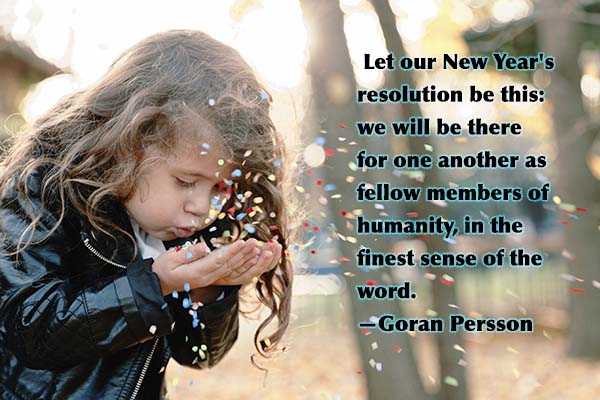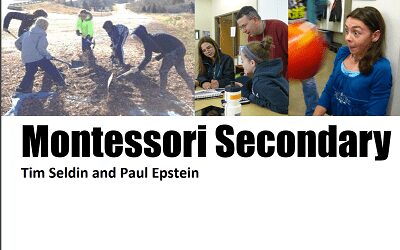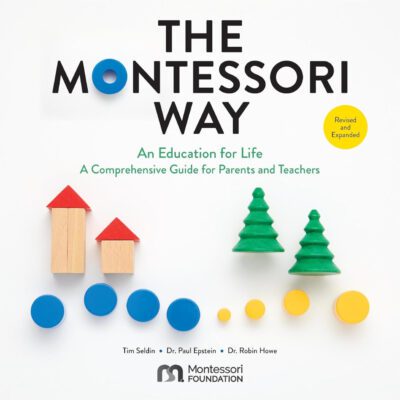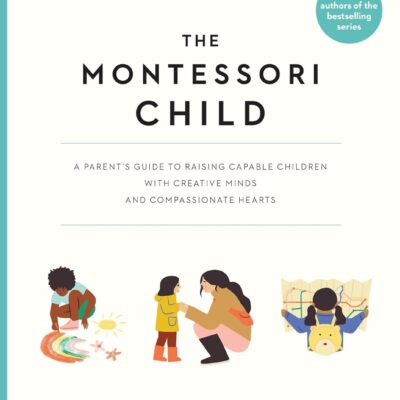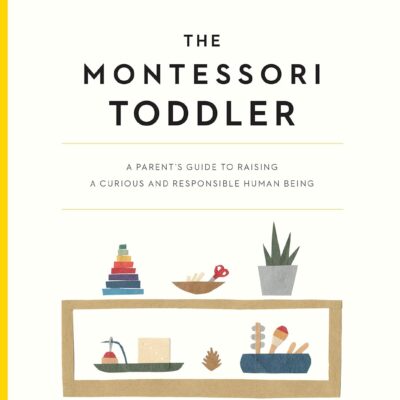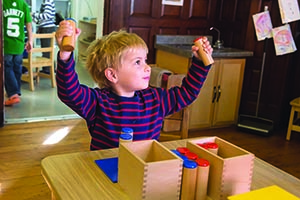 Concentration: What is it?
Concentration: What is it?
In a LinkedIn post this past June, “Want Kids to Succeed? Teach them Focus,” Daniel Goleman explains why concentrating is a precursor for both learning something new and developing self-control. We all know that success in school and in life depends on developing this ability, so it’s encouraging to see modern psychologists and educators recognize this is a fundamental skill to address in school. Goleman offers great suggestions.
There are limits, however, to what one can achieve in educational systems that interrupt students mid-thought to move them to a new subject, change teachers, and that breed competition with grades, rewards, and punishments. For these environments, Goleman proposes exercises for teachers to use to help their students slow themselves down, pay attention to their surroundings (themselves and their peers), and focus on what is being taught. Yet, the rest of the school day is so counter to this mindset that even with improved focus, children cannot develop a deep level of concentration and reach the ultimate benefits of doing so. And, alas, you cannot force a child to concentrate. So, what are we to do
In the Montessori educational approach, the development of concentration is already front and center in its every aspect. This may be a little-known fact. Kathleen Loyd, Ph.D, an AMI Montessori-trained teacher and a college professor, writes that, “…Amid all the comments typically heard explaining Montessori education, the value of concentration for optimal human development is rarely mentioned, yet this is the foundation of [her] work.” (NAMTA Journal, Winter 2011).
Maria Montessori recognized, as early as 1906, that to develop one’s ability to concentrate was essential to all else and, therefore, she began her work with this end in mind. In her lecture in Rome on April 3, 1913, she proposed that unless we work with the nature of the young child, we would be trying to attract a fleeting attention with our teaching efforts; instead, her approach was to “awaken” the attention in the child by presenting a material that meets his developmental needs and encourages spontaneous repetition as the child tries to figure it out. About human nature, she observed, “We do not observe all things indifferently, but there are some things that attract our attention and some which do not, so that the mind is built up…on something that is…actively seized.
“This inborn primitive response can be understood as something that persists and begins to characterize the individual psyche. It is linked to some instinctive impulse…[it is a] principle for the construction of the inner-personality, which must, in turn, develop according to its own particular laws.
“When viewed thus, attention is not something abstract, but something to be developed. In the world around us, we do not see everything, hear everything, and feel everything, but…we…notice [and] assimilate…to the degree to which our powers of concentration are capable. We cannot concentrate our attention haphazardly…but according to an inner drive.
“If this is so…we cannot take the child’s attention and carry it where we will, but we should observe where the child’s attention tends to go, for that tendency reveals the path existing within the child or the developmental need that the child possesses by nature. And this fact is repeated, not only in the child, but, I believe, throughout the whole life of the individual.
“…We can only be guided by facts. In the case of the small child, we find that no child can concentrate on one object for a long time, unless the object itself spontaneously attracts the child’s attention.”
Montessori made it her goal, then, to notice what objects attracted the children’s attention so strongly that they became fixed upon them and, thereby, developed their powers of concentration — powers which could then be transferred to other subjects as their interests were piqued, so that they learned many more things. This also enabled them to form much greater self-control than adults thought possible in small children.
As a side note, I can see that some parents may mistake the way a child stares at a screen and becomes fixated on a video game to be ‘concentration,’ when it is, in fact, very different. We now know that the lights on screens, in a sense, ‘hijack’ the mind and take it where it will, giving the child no practice in being in charge of his mind. The passive experience does not contribute to developing powers of controlling one’s thoughts and regulating one’s emotions; thus, the difficultly in getting a child to look away from a screen, to get him to think of things other than his video game, and the temper tantrums or jittery behavior frequently reported in children after they spend time with digital screens.
What Montessori describes above and in many further writings has the superior qualities that Daniel Goleman, Mihaly Csikzentmihalyi, and other scientists, psychologists and educators recognize as a deep, engaged state in which the heart rate slows, the brain becomes active in measurable ways, and it synthesizes information. The personality becomes calm, self-controlled, and powerful. Csikzentmihalyi coined this state as “flow,” and Daniel Goleman calls it “attention,” or “focus.” When people are intensely interested in what they are doing and able to shut out external stimuli, we can say that they are fully concentrating.
Concentration can also take on the quality of being acutely aware of one’s surroundings and sensorial information, while simultaneously giving focused attention to one chosen thing. We call this being “mindful.” In a Montessori classroom, both the intense concentration that shuts out external stimulus and the subtle awareness of all that is around you (mindfulness) are being developed. In a Montessori classroom, a child flows from one state to the other throughout the day, responding to an environment that encourages both these states. The Montessori environment encourages these states with long, uninterrupted work periods of up to three hours; a trained Montessori teacher who ‘connects’ the child to the materials he may work with by watching for his interests; and surrounding him with other concentrating, working children, who respect one another’s space.
Why is Concentration so Important?
Only when paying attention to what they are doing can people learn something new and make new pathways in their brains. Jeffery Schwartz, MD, and Sharon Begley reported on the findings of brain research in 1993: “…Although experience molds the brain, it molds only an attending brain: ‘Passive, unattended, or little-attended exercises are of limited value for driving’ plasticity, Merzenich and Jenkins concluded. ‘Plastic changes in brain representations are generated only when behaviors are specifically attended.’ And therein lies the key. Physical changes in the brain depend for their creation on a mental state in the mind: the state called ‘attention.’ Paying attention matters…for the dynamic structure of the very circuits of the brain and for the brain’s ability to remake itself.” (Schwartz and Begley, 2000). Furthermore, paying attention is an act of the will, so Schwartz and Begley go on to explore the very point that Montessori herself makes in the previous quote: that to help people develop attention, we must follow their interests, so that their will is the driver.
The Organizing Mind Builds through Concentration
With this important goal of developing concentration, Montessori set out to develop materials that would not only attract the child’s attention but help him to build organization in his mind, learn about the real qualities of the world around him, and explore the minute differences in qualities so that he could see further details and categorize them in the wealth of information he discovers. I will give just one example of such materials: the Sensorial Materials for children ages three and four.
The Sensorial Materials help children to further develop their senses, which is how they explore their world: touch, taste, smell, sound, and sight. The materials are objects made of beautiful wood and other natural substances that young children noticeably want to touch, hold, and explore with their senses. Montessori fine tuned these materials in response to how she saw the young children work with them. The ones we use in our classrooms today are the models she designed after years of experimenting with many different children. She found that at certain ages and stages of development, children were more or less attracted to certain materials, so that we have guidelines on when to present a material to a child and what signs of readiness to look for.
These Sensorial Materials, such as the Brown Stair (which isolates the idea of thickness and thinness) the Red Rods (which isolate the concept of length and differences in length), and the Sound Cylinders (which isolate subtle differences in sound — they have sand inside to shake and discern the slight differences in the sound) are materials that show slight differences in temperature, weight, texture, and so on. Young children fix their attention on these materials and choose to repeat activities with them. They want to find minute differences and delight in doing so.
Some young children may take months to become proficient at finding differences in a particular material, and Montessori found that children will choose that material again and again, concentrating with it on their own for long periods of time, sometimes even after they have mastered it, deepening their understanding of what they have learned. Later on, the Montessori teacher gives names for these detailed differences, so that child can name their newfound qualities: light, lighter, lightest, and so on. This spontaneous choosing and repeating, along with the totally effortful focus that results, is remarkable. This discovery is unique among educational approaches and, yet, the outcome is highly sought.
The result is not just the development of a heightened ability to concentrate, which later can be transferred to other areas of life, such as listening to the soccer coach or paying attention during a symphony without wiggling all over are abilities that are noticeable results in many Montessori students as young as four year old. Montessori pointed out that the child’s entire personality is transformed by this growing ability to concentrate, as he becomes more and more in control of his own mind and body. Over time, a calmer, more clear-thinking personality emerges. Indeed, I have heard many parents remark with surprise and wonder that their child seemed to acquire pleasant manners just weeks after starting at our school. This is what Montessori noticed again and again, in all kinds of children: They are more ready to cooperate, more eager to help fellows and interact generously, more at ease, happier and more interested in the world around them. It is as if their minds and spirits have been ‘woken up.’
Montessori also saw that the Sensorial materials and exercises gave children reference points and a structure within which to categorize impressions and organize their thoughts: “They also structure their minds, which [are] developing in an orderly way, a phenomenon which has impressed psychologists who have tried to observe the formation of the mind.
“So, we might say that all the objects which we call objects for sensorial education are the instruments of a mental gymnasium, which not only develop and strengthen the mind, but also order it….[and] hence the child acquires not only an order of mind but also a capacity for consecutive observation.…The emotional impact is the joy our children experience when becoming explorers of their environment. We find that this becomes a great impulse, the impulse of inquiry, so that the child does not tire of observing but presses forward to make observations….The passion for knowledge is aroused in the children much like the passion which develops in scientists who, in their studies, are continually making discoveries.”
It may sound strange to think of the child organizing his mind, but realize that Montessori was never proposing that the adult manipulate or decide what to put into the child’s mind, (the way a screen activity does, by the way). With her approach, the child’s own mind chooses what he is interested in, does the organizing of its own accord, and he is, therefore, teaching himself and building his own unique mind. The materials and the manner in which a trained Montessori teaches presents these materials to the child gives him all the guidance he needs to make use of the information and do the work on his own effectively.
How can we foster concentration at home?
Outside of school, parents can support this amazing development of concentration by being aware of how sensitive young children are to their surroundings: Be as ‘present’ and ‘mindful’ as you can when you pick them up from school; leave the smart phone ringer off and tucked away when you are with your children; give them your attention and take the opportunities to be aware of the smells, sights, sounds of nature around you as you walk slowly to your car; talk with your children in the car, pointing out the changing colors of leaves on the passing trees, the weather of the sky; sit down at your child-sized table to eat together and take your time; steer the conversation to the ‘here and now’ rather than a list of activities that will follow.
During your child’s rest time, give yourself the gift of resting, too. Choose a good book, do yoga, or take a nap rather than getting sucked into your smart phone or the list of to-do’s. In the afternoons, take a walk or prepare the dinner meal with your children, talking about the foods as you do. When you have young children, don’t be ambitious! Now is the time in your life to be slow. This is how you provide a home life that helps your young children develop their natural powers of concentration.
If you have multiple children, try to spend time with one at a time (if possible) by asking a friend, caregiver, relative, or spouse to spend time with the others, even for 15 minutes. When you are with several children at once, assign each child a different task and space to do it in so that they interfere with one another as little as possible. They are used to this habit at school, so you can continue it at home, too. Finally, as best you can, save your smart phone, to-do list, errands, and other more frenetic activities for when your children are not with you. That way, you can slow your pace when you are with your children.
We cannot force concentration, but we can create conditions for it to develop. As a parent, if you feel you cannot create ideal conditions for concentration, then make safeguarding against the obstacles to it your main goal. The most common obstacles to avoid are constant interruptions and televisions/screens/electronic toys.
Finally, be aware that your children are having a beautiful experience of concentration during the day in their Montessori classrooms. Having a little down time after school allows them to assimilate the unconscious impressions of the day in their minds. If you have several children and the afternoon tends to be chaotic by nature, create a routine for everyone to spend a brief quiet time in their rooms or different parts of the house or yard after school, so that they have this much-needed time to let all the learning of the day sink in. There is a noticeable difference in the classrooms the next day for children who have uninterrupted downtime after school, specifically without screens. Your children are more likely to walk into school the next day, picking up where they left off, than children who spend their time outside of school racing from one activity, conversation, or playdate to another and who dive into bed without that precious time to think, read, or calm themselves. Time to play freely outside after school, relax, help with dinner, contribute in the home, and read directly supports their developing concentration and prepares them to get the most out of the next day in their Montessori classrooms.
Conclusion
Montessori — through her scientific observations of children — was able to point out how important concentration is for optimal development and the creation of an educational approach enhances it in every way. She had no brain-imaging machines to prove the psychological phenomena she was seeing, but we certainly do today. And we can see the way our children become their best selves when they are able to concentrate on what they are doing. With concentration, not only are children more successful in their tasks and skill development, they also become more aware of (and empathetic to) those around them. Montessori told us:
“The first essential for the child’s development is concentration. It lays the whole basis for his character and social behavior. He must find out how to concentrate, and for this he needs things to concentrate upon. This shows the importance of his surroundings, for no one acting on the outside can cause him to concentrate. Only he can organize his psychic life. None of us can do it for him. Indeed, it is just here that the importance of our schools really lies. They are places in which the child can find the kind of work that permits him to do this.” (The Absorbent Mind, 1967.)
Bibliography
Goleman, Daniel, “Want Kids to Succeed? Teach Them Focus,” LinkedIn, 2016
Loyd, Kathleen, The Power of Concentration, NAMTA Journal, Winter 2011
Csikzentmihalyi, Mihaly, Flow, 1990
Schwartz, Jeffery and Begley, Sharon, The Mind and the Brain: Neuroplasticity and the Power of Mental Force, 2002
Montessori, Maria, The 1913 Rome Lectures, 2013
Montessori, Maria, The Absorbent Mind, 1967

